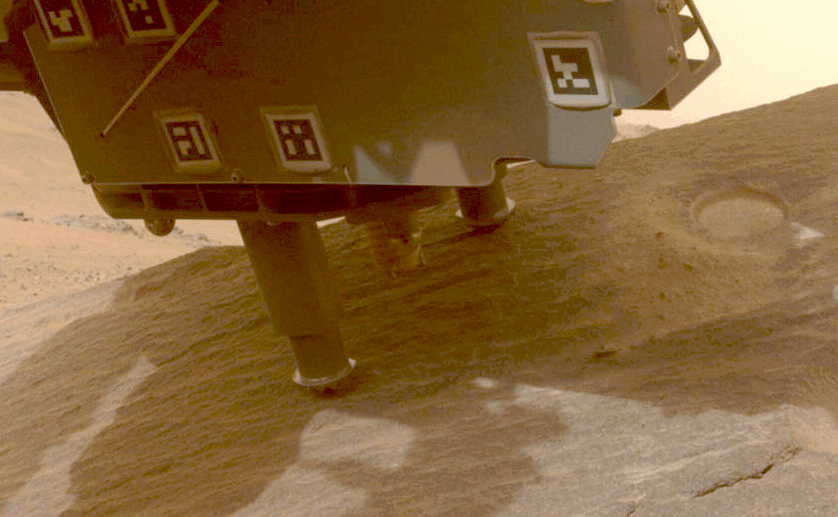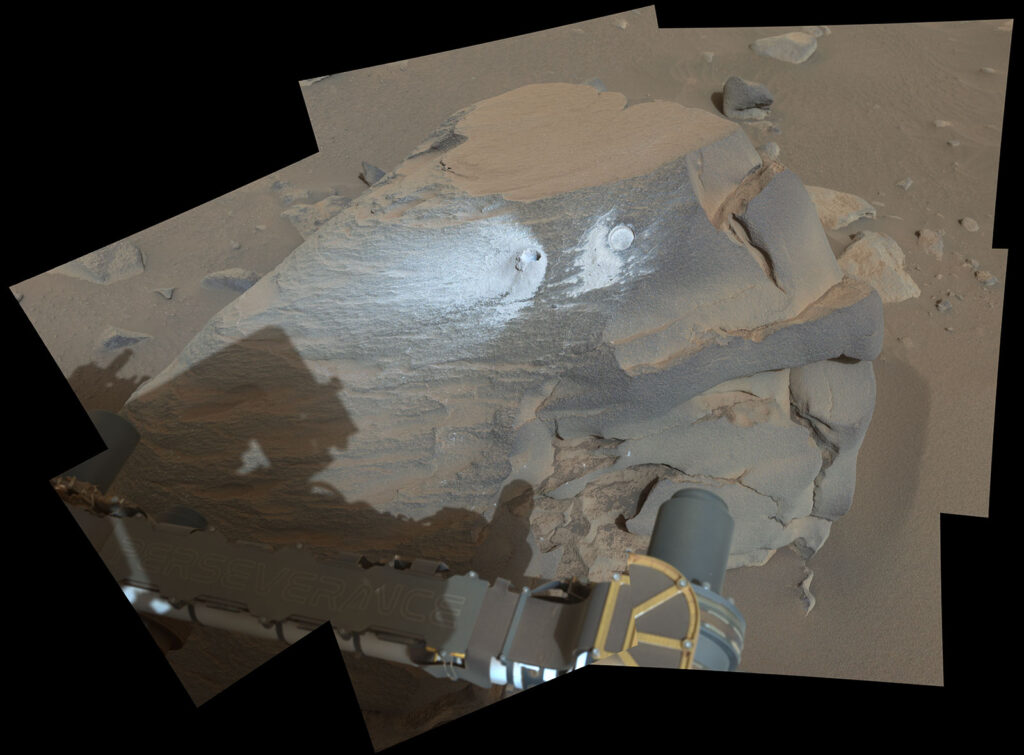The Perseverance rover has taken a new sample of Martian soil. In the distant past, it was in the water for a long period of time, possibly being part of the beach.

The soil sample taken by Perseverance is part of a rock about 1.7 meters wide and 1 meter high, informally named Bunsen Peak in honor of the landmark of Yellowstone National Park. It has intrigued scientists by the fact that it has an interesting texture on one of its faces and, due to its shape, is more convenient to explore than other surrounding formations.
Before taking a sample, Perseverance scanned the rock using SuperCam spectrometers and the PIXL X-ray spectrometer. The analysis showed that the Bunsen Peak consists of about 75% carbonate grains cemented with almost pure silica.

According to the researchers, this is exactly the kind of rock they hoped to find. Almost all the minerals in it were formed in water. On Earth, such minerals usually retain ancient organic material well and preserve biosignatures. The analysis of this rock is even able to tell scientists about the climate of Mars during its formation. In addition, it may be one of the oldest cores mined by Perseverance.
The new sample was the 24th collected by Perseverance during its mission. At the moment, its “catch” consists of 21 capsules with rock cores, two capsules with regolith and one capsule with a sample of the Martian atmosphere. Now the rover is moving to a place nicknamed “Bright Angel”. It is of interest to the scientific team, as they expect to find much older rocks that make up the rim of the Jezero crater. Upon completion of the Angel research, Perseverance will begin a multi-month ascent to its peak.
As for the samples extracted by the rover, scientists hope that in the future they will be able to return to Earth with the help of the Mars Sample Return mission. Unfortunately, it is now under threat of cancellation due to serious technical difficulties and cost overruns.
According to https://www.nasa.gov
Follow us on Twitter to get the most interesting space news in time
https://twitter.com/ust_magazine


